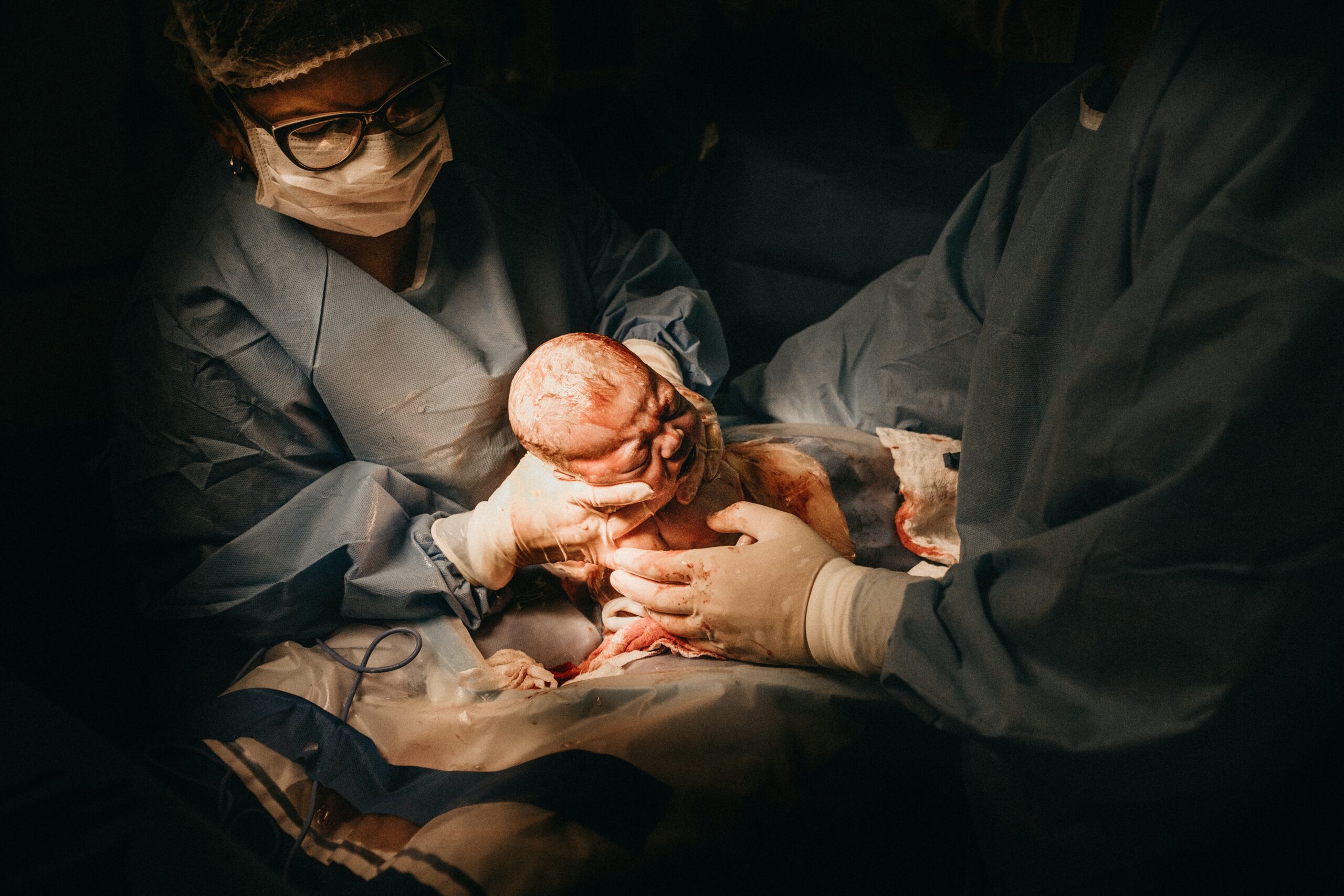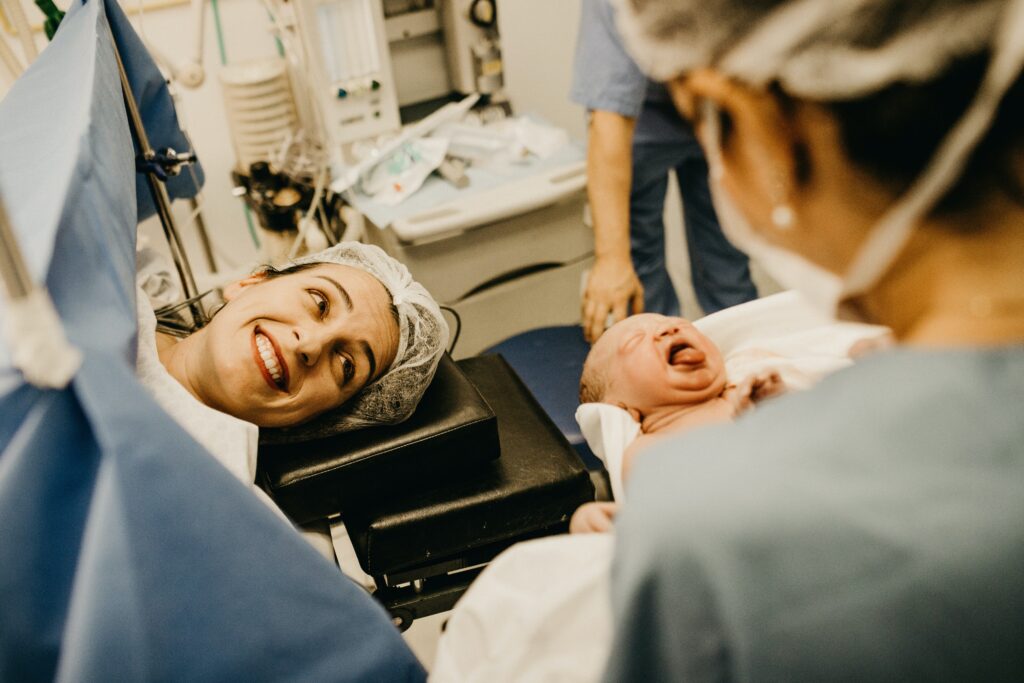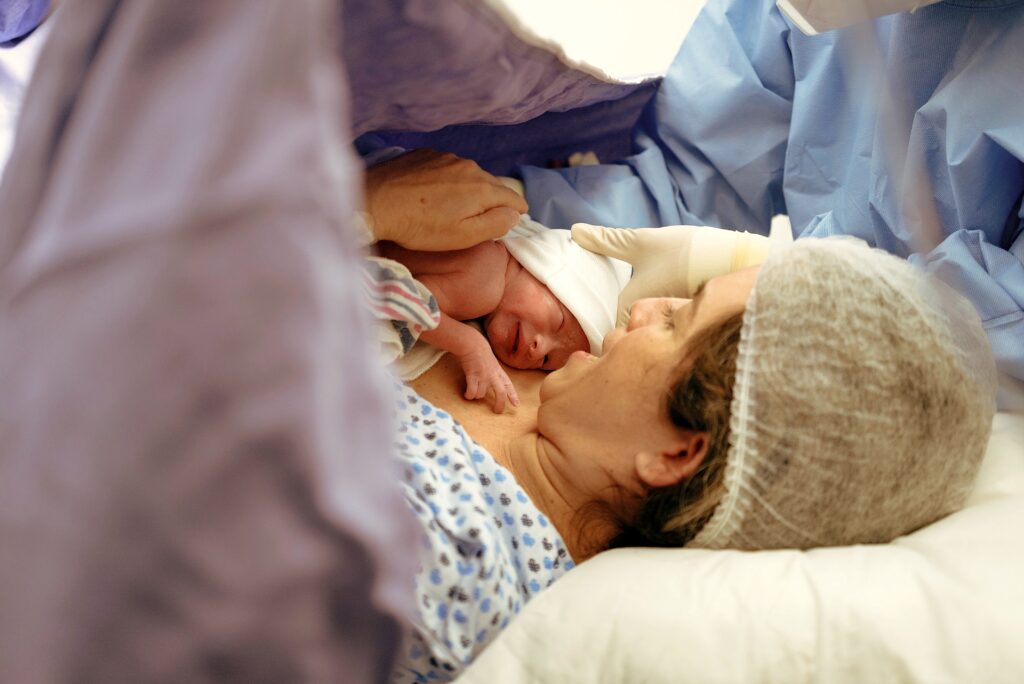
Cesarean Section
“There are two lasting things we give our children. One is roots and the other is wings.”
Hodding Carter, Jr.
Cesarean section is a surgical method we use to save the life of the mother and baby when we decide that the baby cannot be delivered by vaginal birth or when unexpected complications occur during delivery.
We usually decide whether to have a cesarean section or a vaginal delivery before the birth, depending on the health status of the mother. Sometimes your baby makes this decision himself or herself during labor.

In which cases is a cesarean section necessary?
The baby is breech
Fetal Bradycardia
Cephalopelvic Disproportion (CPD)
The mother’s pelvis is not suitable for normal delivery
Fetal macrosomia
Uterine surgery history of mothers
Placenta previa
Multiple pregnancies
Prolonged labor

Determination of The Type of Anesthesia for Cesarean Section
If everything goes well, we prefer spinal anesthesia in line with the mother’s request, both to ensure that the baby is not affected by anesthesia and to allow the mother to witness this moment. However, if there is a problem with the mother receiving spinal anesthesia or experiencing deep anxiety and fear, or if the anesthesiologist recommends this, we can also resort to general anesthesia. The biggest advantage of spinal anesthesia is that the mother can take care of her baby immediately after birth and breastfeed her baby, as she will be fully conscious at the time of birth.
Contact Op. Dr. Duygu Mutlu.
Every birth is unique and has its own dynamics. We are aware of the value of this special moment, and we are ready with our whole team for you to hold your baby in your arms in good health. Call us if you would like to follow your baby’s growth with us.

Mom & Baby Friendly C-Section
A cesarean section does not interfere with skin-to-skin contactand the secure bonding of mother and baby. Delayed cord clamping (waiting as long as possible for cord blood flow to continue) can also be performed during a cesarean section if appropriate conditions are met. Since having the baby touch the mother’s breast naked after birth is very valuable for secure attachment, an experienced nurse can ensure that this moment takes place. While the mother’s surgery is ongoing, the mother and baby can spend skin-to-skin time together and the mother can even breastfeed her baby during this time. Delayed clamping prevents future anemia in the baby.

Controls after Cesarean section
After a cesarean section, the mother and baby remain in the hospital for forty-eight hours and then may be released. Mothers continue dressing and taking care of wounds at home for a week and have their general check-up at the doctor’s office one week later, after we check the stitches the dressing is left open. Since cosmetic sutures are usually used during labor, no stitch removal is required. On the fortieth day after delivery, we return to routine gynecological follow-up with final checks.